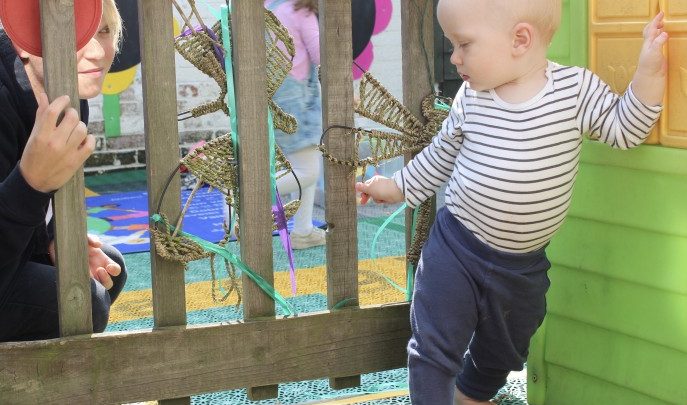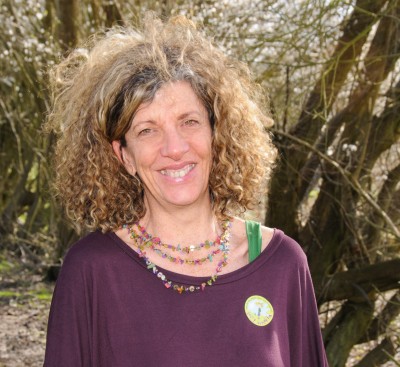Walking Is A Process That Should Be Nurtured By Attentive, Sensitive And Playful Care

Sue Heron explores the wonder, the wherewithal and the wanderings of those early steps

- by Sue Heron

In the Neurophysical Basis of Movement, Mark Latash described the ability to stand as “a miracle”. Indeed, it’s a wonder that, as adults, we can walk down a busy street whilst talking on our mobiles. As well as being an amazing physical skill, it’s suggested that walking also encompasses perception, cognition and social interaction (bit.ly/2dn4eiE). Thus the very action of walking can be seen as powerful vehicle for learning as it encourages infants to play and explore, learn, and think critically and creatively.
The wherewithal
It’s generally agreed that until they are about 9-12 months, infants lack the postural control and strength required to walk. Postural control is “the ability to control the body’s position in space for the dual purpose of stability and orientation”, and involves the maturation of a child’s musculoskeletal and neural systems.
• Walking presents the infant with three main postural control challenges:
• Whilst sitting and crawling, infants have much of their body on the ground – a large ‘base of support’. In standing and walking, they have a far smaller base of support – their feet.
• When standing and walking, a toddler’s centre of gravity is higher, hence harder to control.
• Whilst standing and walking, toddlers need to gain more control over their hip, knee and ankle joints, as all can now move further, in many directions.
Postural control largely develops in the first seven years of life as children explore their world. Control is gained in a general head-down direction, ie a baby controls his head before his hips. Establishment of good postural control provides a firm foundation for walking and running, and can be nurtured in various ways:
• Provide opportunities for floor-play inside and out, where there’s space to move and surfaces to push up from.
• Give babies time to explore in each position – lying on their back, tummy or side, sitting, crawling, kneeling or standing.
Building strength
We know that adequate strength in the back, tummy, hip and leg muscles is required to step forwards with one leg while balancing on the other. From 0–2 years, babies’ chubbiness decreases and their muscle mass increases. They become less top-heavy and more cylindrical in shape. Research suggests chubbier infants walk later than their slimmer, more cylindrical peers.
Usually babies start to pull up to stand at around 6-8 months. They may climb up a familiar adult or use a low table. Once up, they spend time bouncing up and down whilst holding on to the support with both hands, strengthening their muscles and gaining control of their hip, knee and ankle joints.
The next key stage is walking sideways, typically using furniture for support. ‘Cruising’, as it’s known, is vital for developing the appropriate postural control needed for independent stepping. Often a baby will take their first step sideways as they turn their head to look at a favourite toy just out of reach. Their head-turn prompts them to shift their weight onto the leg nearest the toy (their ‘front’ leg), freeing their other leg (their ‘back’ leg), to step sideways. The infant then shifts their weight onto their back leg, freeing their front leg to step.
Adult support
From around eight months, babies increasingly enjoy experimenting with their walking skills while being supported by an adult, reaching both arms above their head to hold their carer’s hands. This ‘high-guard’ arm position gives the infant more stability as well as being convenient for the carer! However, to ensure the development of appropriate postural control, this activity should only be done for brief periods and combined with other chances for supported walking, eg cruising.
As postural control develops, the infant is able to turn their body further over their hips to adopt a more forward walking pattern. At this stage one hand is used for support, usually resting on furniture or holding an adult’s hand.
The first independent steps require concentration. An eye-level, smiling face and outstretched arms are great motivators, as the infant largely relies on their visual sense to balance. Clear, non-slip, surfaces provide them with the best possible chance of success!
To keep balance and move forwards on two feet, toddlers adopt a ‘Charlie Chaplin’-like walking pattern, eg short, unsteady steps, in a wide stance with feet turned outwards. To minimise the time spent on one foot, they plant their whole foot on the ground as they step forwards instead of using a mature heel strike.
The wanderings
Once infants master independent walking, they refine their skills with practice and experience. Speed and stride length increases, as does flexibility, ie they learn to modify their walking pattern to negotiate obstacles or to complete a task.

Recent theories on physical development suggest movements emerge from interaction between the child, the environment and the task (play). Such theories challenge us to both think about children’s movements. and the context in which they occur. This is exciting, as it means that carers can nurture and progress a child’s physical skills by altering their immediate environment and introducing play (task activities). For example, a toddler’s balance whilst standing and cruising can be progressed by:
• Offering less support, eg encouraging cruising around cardboard boxes/plastic baskets; as these are flexible, they challenge the toddler’s balance skills whilst they are on the move. Cruising around a playhouse presents the young child with obstacles to negotiate and may prompt them to hold on to a more unstable support, eg a playhouse window. • Offering varied, more unstable surfaces to stand on or walk over, eg grass.
• Encouraging play. For example, as the young child passes a ball, they let go with one hand and alter their centre of gravity.
Your role
Walking is a process, nurtured by attentive, sensitive and playful care. Practitioners can support toddlers by offering them frequent opportunities to walk, spread over the day, in varied environments whilst doing playful activities.
SEVEN STEPS TO SUCCESSFUL WALKING
1. Make it fun! Motivation is key.
2. Watch. Judge when to provide support, join in or hold back.
3. Provide short, frequent walking opportunities over the day. Walking is hard work so infants need time to recover and reflect on their experiences.
4. Think feet! Remember, these are the only base of support for the walker. Barefoot is best, but when shoes are required, ensure they are flexible and checked frequently for size.
5. Vary the environment. Walk inside and out. Think about the nature of the support; does it need to be firm or can it be more flexible? Build obstacle courses for more experienced walkers, e.g. firm, low cushions on clear, non-slip surfaces (keeping unstable obstacles away from hard edges).
6. Make it functional. Bring object play into walking, as ‘having a job to do’ increases the challenge and boosts motivation.
7. One step at a time! Don’t change things or add tasks too quickly – let toddlers enjoy their achievements.
Sue Heron is Programme Coordinator and Paediatric Physiotherapist at Tatty Bumpkin, which runs a national programme of yoga-inspired sessions for babies and children aged 0-7 years in nurseries, preschools and schools. The unique story-based sessions are fully aligned to the EYFS, and have been developed by yoga teachers, paediatric physiotherapists and educationalists.
Many thanks to the staff and children at Country Cottage Nursery, West Peckham, Kent for their assistance with the pictures.










